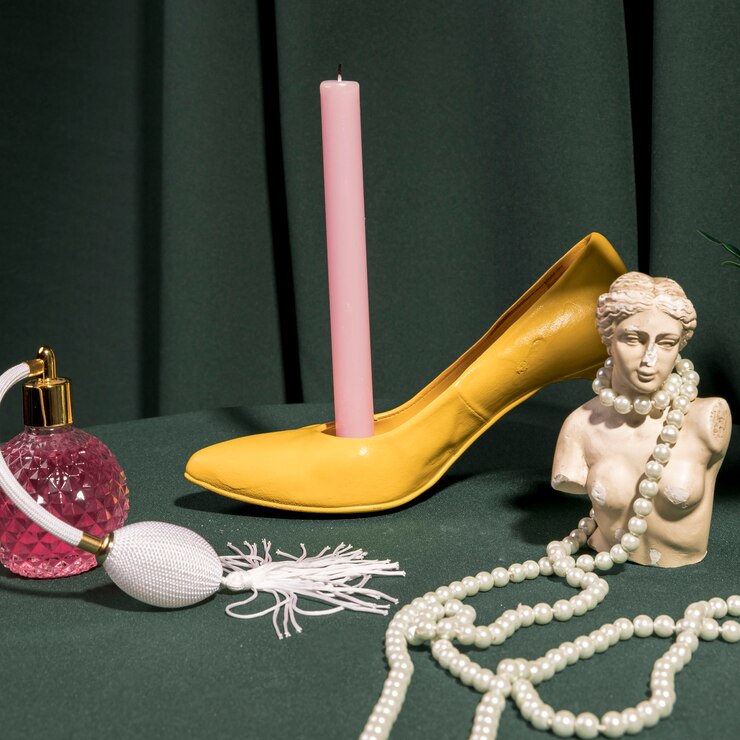The journey of women’s shoes is a fascinating narrative woven through centuries of culture, innovation, and evolving fashion sensibilities. From their humble beginnings as functional items to their status today as fashion statements, the history of shoes reflects broader societal changes, gender roles, and aesthetic values. This article explores the evolution of women’s footwear, tracing its path from necessity to high fashion.
Ancient Beginnings: The Functional Footwear
The history of women’s shoes dates back to ancient civilizations, where footwear was primarily practical and protective. The earliest known shoes, dating back to around 3500 B.C. in Mesopotamia, were simple leather sandals. Made from plant fibers or animal hides, these early designs were functional, designed to protect feet from rough terrain.
In Ancient Egypt, sandals made from palm leaves and leather became prevalent among women, often embellished with beads and jewels, hinting at the early intertwining of function and aesthetics. However, it wasn’t until the Greeks and Romans that footwear began to reflect social status and fashion. The Romans, for instance, created elaborate sandals that denoted rank, with intricate designs and colorful leathers.
The Middle Ages: The Rise of Decorative Footwear
As Europe entered the Middle Ages, women’s shoes began to evolve dramatically. The designs became more complex, with pointed toes and high arches, reflecting the cultural norms of the time. Chopines, a type of platform shoe, gained popularity in the 15th century, particularly in Italy and Spain. These shoes elevated women, both physically and socially, allowing them to look more aristocratic.
Chopines could be quite high, sometimes reaching over 20 inches, requiring women to be helped when walking. This extravagant footwear represented wealth and status but also underscored the restrictive fashion of the period. Women’s footwear during the Middle Ages often limited mobility, reinforcing the societal expectation of women’s roles.
The Renaissance: A Shift Towards Fashion
The Renaissance period marked a significant turning point in the history of women’s shoes. As society embraced art, culture, and individuality, shoes became more expressive. Ornate designs, rich fabrics, and intricate embroidery were introduced, allowing women to showcase their status and personal style.
Heels also made a notable appearance during this time. The introduction of high heels by the French court transformed women’s footwear from practical to fashionable. Heels were initially worn by men but quickly became a symbol of femininity and elegance for women. The more extravagant the heel, the higher the status it signified.
The 19th Century: Industrialization and Accessibility
The Industrial Revolution brought profound changes to the production of women’s shoes. With advancements in manufacturing techniques, shoes became more accessible to the general population. The creation of the sewing machine in the 1850s allowed for mass production, leading to a wide variety of styles at lower prices.
This era also saw the emergence of the boot as a fashionable item. Ankle boots became popular, often adorned with buttons and decorative elements. The Victorian era introduced more practical designs, with an emphasis on comfort and functionality alongside style. This period laid the groundwork for modern women’s footwear, balancing aesthetics with everyday wearability.
The 20th Century: Revolution and Reinvention
The 20th century marked a significant shift in women’s roles and, consequently, their footwear. The early part of the century saw the continuation of elegant styles, such as Mary Janes and oxfords, which were practical for women entering the workforce during World War I.
However, the post-war era brought about dramatic changes. The 1920s ushered in the flapper movement, and with it, a new sense of liberation for women. Footwear became more daring, with shorter hemlines allowing women to flaunt their shoes. T-strap sandals and elegant pumps emerged as symbols of freedom and modernity.
By the mid-20th century, designers like Christian Dior and Coco Chanel were redefining shoe fashion. The introduction of the stiletto heel in the 1950s revolutionized women’s footwear, emphasizing femininity and allure. The stiletto became a staple for evening wear, while casual styles like sneakers also gained popularity, reflecting the changing landscape of women’s lifestyles.
The 21st Century: Sustainability and Individuality
Today, women’s shoes are a dynamic fusion of style, comfort, and sustainability. With the rise of conscious consumerism, brands are focusing on eco-friendly materials and ethical production practices. The market is flooded with options, from chic sustainable sneakers to elegant evening shoes made from recycled materials.
Moreover, the 21st century celebrates individuality. Women’s shoes now encompass a vast array of styles, allowing for personal expression through footwear. Whether it’s trendy chunky sneakers, sleek ankle boots, or sophisticated heels, today’s options reflect a diverse and inclusive fashion landscape.
The evolution of women’s footwear tells a compelling story of function transforming into fashion, mirroring societal changes, cultural shifts, and individual expression. From the ancient sandals of early civilizations to the stylish and sustainable options available today, shoes have always played a crucial role in defining not only how women present themselves but also how they navigate the world. As we look to the future, one thing is clear: the journey of women’s shoes will continue to evolve, offering new ways for women to express their unique styles while remaining comfortable and empowered. It is important to choose everything with style – shoes, art print, personalized gifts.





